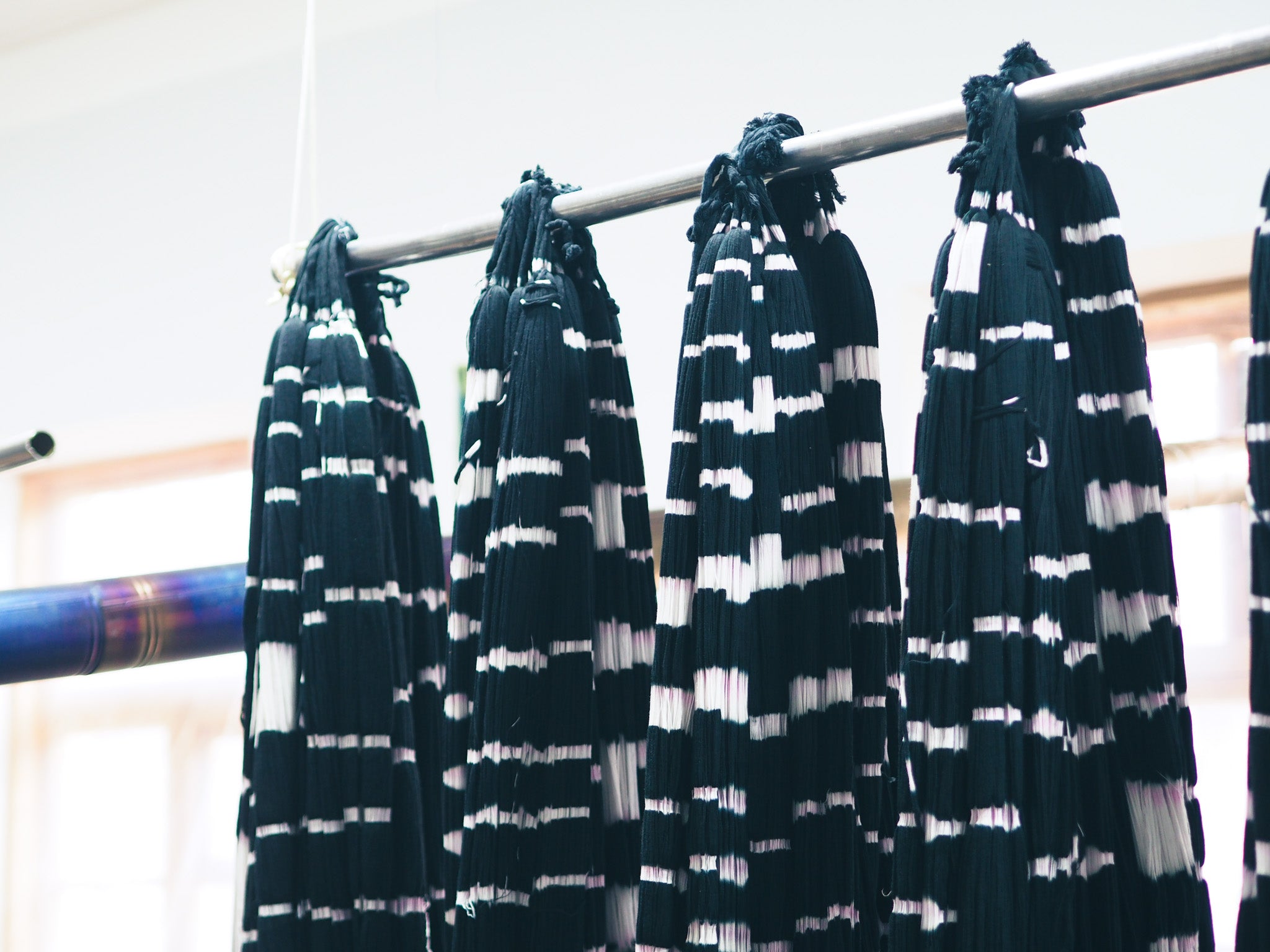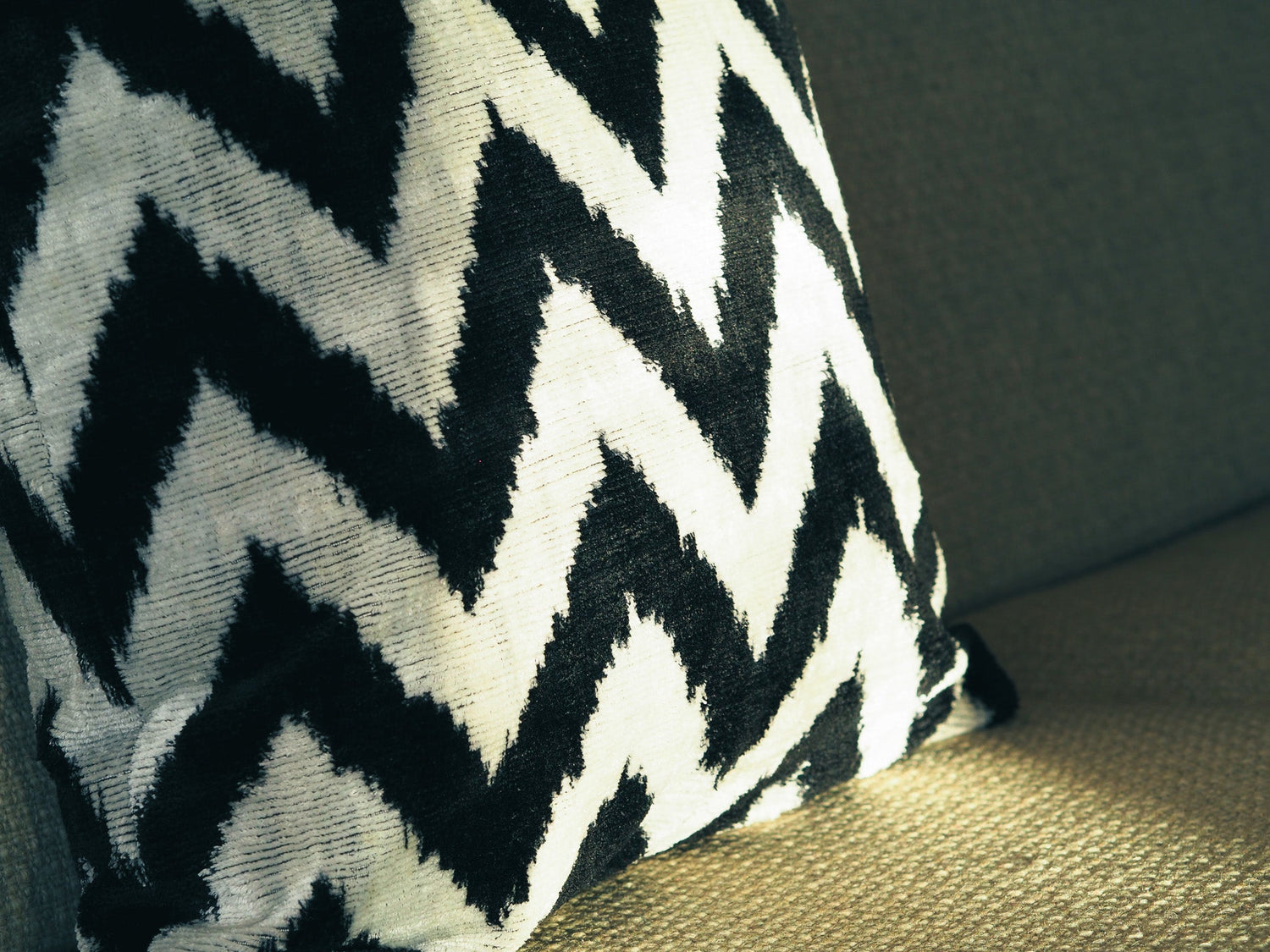IKAT OR ABR-BAND ("TYING A CLOUD") FABRICS
The term Ikat originated in Indonesia and describes the process of binding or hiding the parts of the pattern that should remain white in the next dyeing step. The correct term used in Central Asia is Abr-Band. Genuine Abr-Band has travelled the Silk Road for centuries and originated in Uzbekistan's Fergana Valley.
All Abr-Band used for our cushion covers was produced through a lenghtly process involving twelve major steps and dozens of people. The fabric is hand-dyed and hand-woven, mostly made of finest materials, such as silk.
Please Note: Googling "Ikat" will often show you mass-produced fabrics with a somewhat blurred pattern that was printed after weaving. These fabrics have nothing to do with true Abr-Band.

Video created and owned by International Trade Center - Ethical Fashion Initiative.
-
BAKHMAL
Bakhmal is what we use for all our Abr-Band proucts. Also known as "Ikat Velvet" or "Silk Velvet", this fabric is heavier and requires more silk, time and advanced skills. Holding a Bakhmal in your own hands, knowing it was handcrafted, will leave you puzzled. This is quiet luxury at its best.
-
ADRAS
Adras was the most popular Ikat fabric in the 18th and 19th centuries and remains the most commonly used hand-woven Ikat today. Made from both cotton (for the weft) and silk, it requires only two pedals. Its slightly heavier textile is very versatile and often seen in clothing.
-
ATLAS
Atlas is also known as "Satin" and requires all eight pedals of the loom. Atlas is a noble fabric with a shiny finish, and both the front side and the back side display the same pattern. The price of Atlas depends on the amount of silk used, as it is sometimes combined with cotton or viscose.
-
SHOYI
Shoyi is hand-woven and made of 100% silk which makes it the most delicate Abr-Band. This light and very flexible fabric is ideal for scarves, providing both elegance and comfort.
-
ISKAT
Roughly every two meters, you will find a fine horizontal line in your Abr-Band. This is not a flaw but rather a sign that the product was hand-made. The Iskat helps the weaver line up the pattern when preparing the loom.
-
SYMMETRY
Symmetry is an important characteristic of Abr-Band, and Uzbek patterns often showcase symmetric floral motivs. These patternas are very distinct from the Ikat that has evolved in other parts of the world, such as Japan or India.

BAMBOO VELVET
A more recent innovation is Bakhmal made from bamboo viscose yarn. Instead of the fibers of silkworm cocoons, bamboo trees are used as the raw material for Bamboo Velvet.
Interestingly, bamboo velvet is just as dense as silk Bakhmal, and its elegant lustre is in no way inferior to that of silk. It is an ideal option for consumers looking for vegan products.
All our products made of viscose yarn ar labelled "Bamboo".










